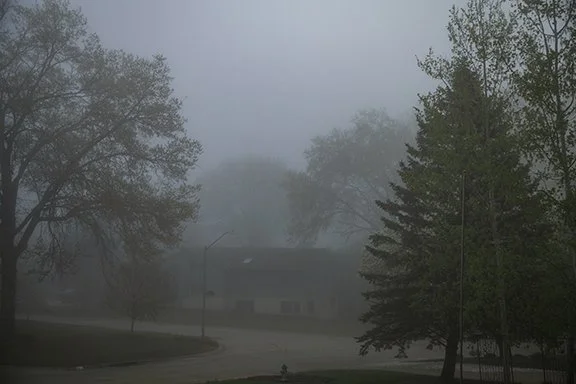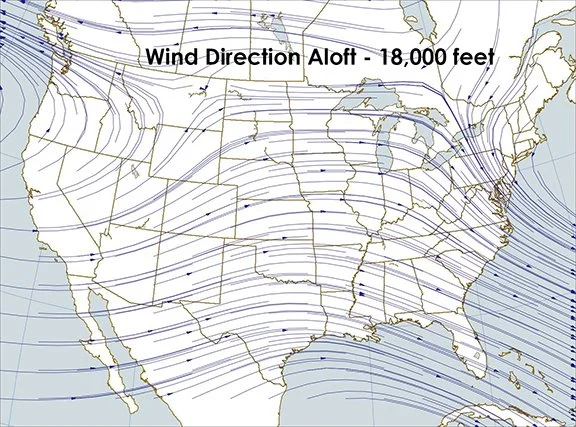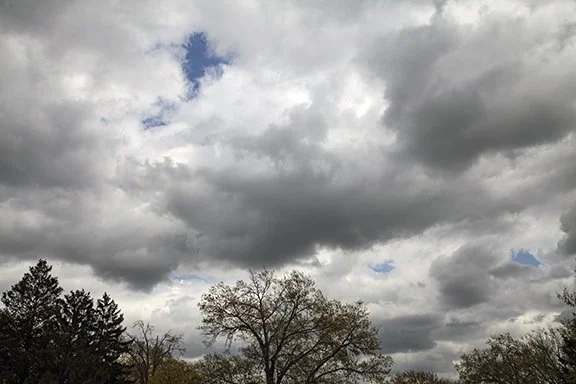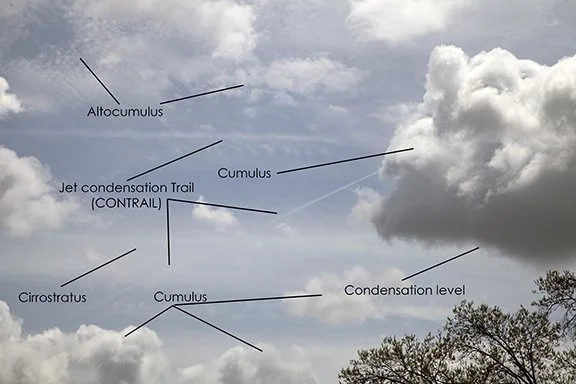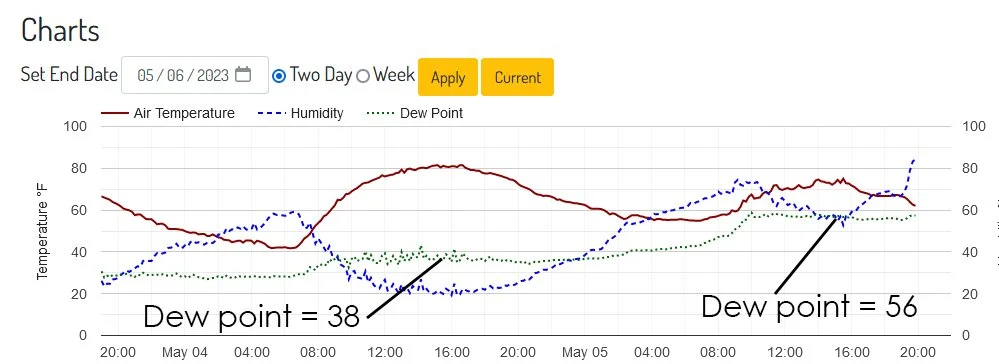That brings us to what is sometimes a confusing relationship.
Temperature, dew point, and relative humidity are related. Changing the temperature while holding the dew point steady causes the relative humidity to change. Holding the dew point steady and changing the temperature also changes the relative humidity. If we raise the temperature and raise the dew point the relative humidity may be held steady - or maybe not. It depends on how much we change the temperature and dew point. There are other combinations that we won’t go into right now.
Using the chart below, which traces the changes in temperature, dew point, and relative humidity today, as measured by our weather station, we can see that at 7:20 a.m. the temperature was 58.6 degrees, the dew point was 58.3 degrees, which made the relative humidity 99%. No wonder we had dense fog!
If we follow the red temperature line we can see that the temperature and dew point (green dashed) lines converged overnight. We also can see the the lines diverged this morning after 10:00 a.m. The relative humidity increased overnight. This morning the relative humidity line (blue dashed) decreased rapidly. As the temperature warmed and the dew point held steady, the air could “hold’ more water vapor, so the relative humidity was no longer near 100%. If we looked at the wind speed we would see that winds were increasing at the same time which mixed drier air in with the very damp air near the ground which lowered the dew point and relative humidity.
Weather stations like the one we have are able to illustrate how temperature, dew point, and relative humidity change in relation to each other. If you know how to interpret the changes you are able to explain what is happening in the atmosphere and why. Click here to see our current weather observation which we update every 10 minutes.






































































